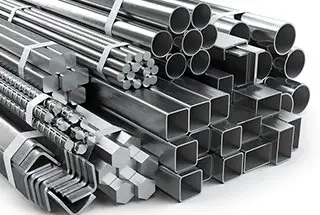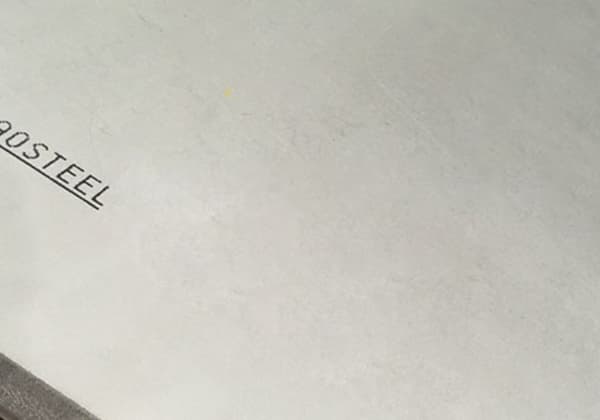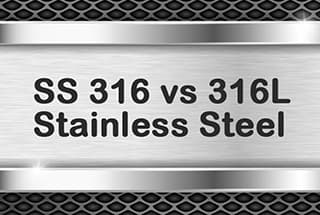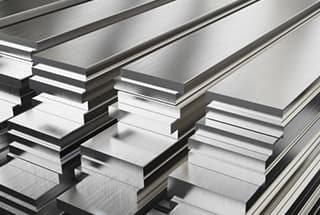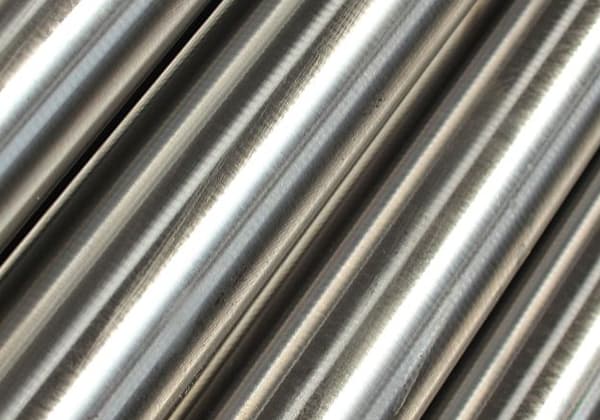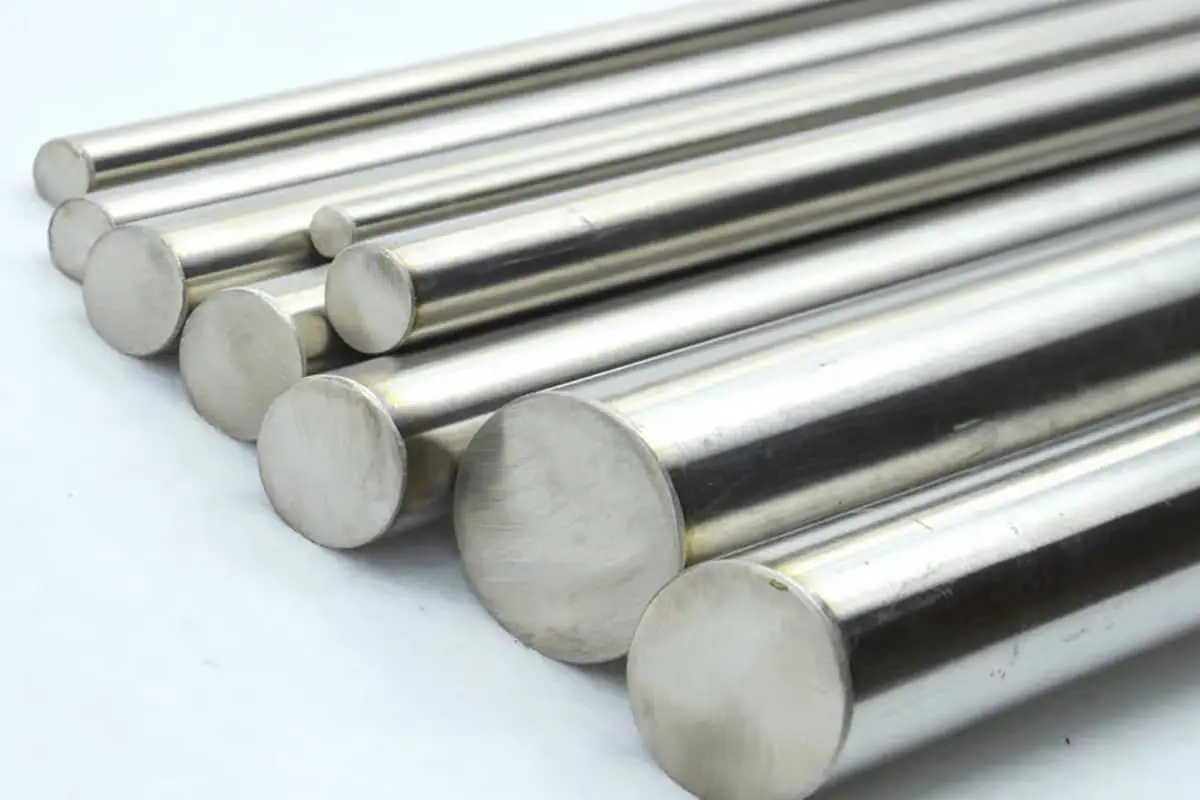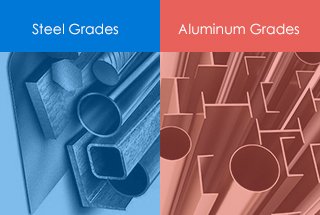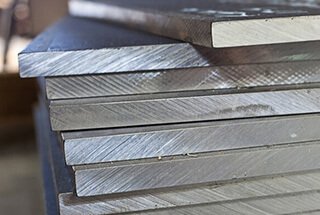
What sets 304L and 304H stainless steel apart? Imagine working on a crucial project, choosing between these two materials. This article explores their differences and similarities, from chemical composition to performance in high-temperature environments. Readers will understand the key factors in selecting the right material for specific applications, ensuring both efficiency and durability in their projects. Dive in to discover how these alloys can impact your engineering decisions.
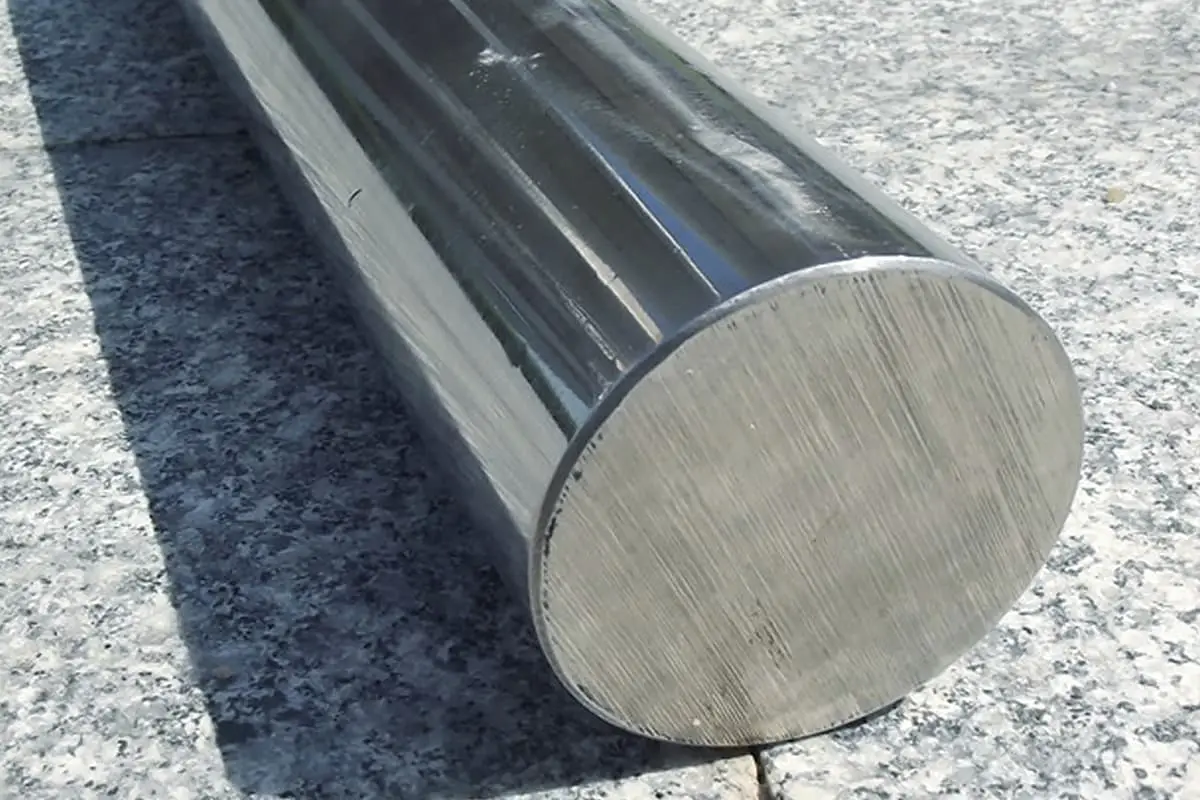
During the construction of a particular project in 2014, we encountered welding construction issues involving both 304 and 304H pipe materials.
Through a series of project activities related to materials management, construction management, welding techniques, and inspections, we observed that the 304 series materials share common traits within a certain range, but also have clear distinctions and stringent separations.
Therefore, summarizing these similarities and differences contributes to the systematization of knowledge and the accumulation of future construction experience.

Austenitic stainless steel generally falls under the category of corrosion-resistant steel and is the most widely used type of steel.
The 18-8 type stainless steel is most representative, exhibiting favorable mechanical properties, and is convenient for mechanical processing, stamping, and welding.
It offers excellent corrosion resistance in oxidative environments and good heat resistance. However, it is particularly sensitive to media containing chloride ions (Cl-), which can lead to stress corrosion. The 18-8 stainless steel, mainly 304, 304L, 304H, is available in various forms, including sheets, bars, and plates.
The 304H alloy (UNS S30409) is a modified version of the 18% chromium, 8% nickel 304 austenitic alloy. The carbon content in this product is controlled between 0.04 and 0.10, enhancing the high-temperature strength of the product components in environments above 800°F.
This section primarily discusses the steel grades, chemical composition, and performance of 304 austenitic stainless steel materials, mainly comparing steel plates and steel pipes.
Approximate Equivalent Table of Steel Grades for Austenitic Stainless Steel Plates of Grade 304
| No | GB 24511-2009 | GB/T 4237-1992 | ASME(2007) SA240 | EN 10028-7:2007 | |||
| Unified Numbering System | New Grade | Old Grade | UNS Code | Model | Numeric Code | Grade | |
| 1 | S30408 | 06Cr19Ni10 | 0Cr18Ni9 | S30400 | 304 | 1.4301 | X5CrNi18-10 |
| 2 | S30403 | 022Cr19Ni10 | 00Cr19Ni10 | S30403 | 304L | 1.4306 | X2CrNi19-11 |
| 3 | S30409 | 07Cr19Ni10 | —— | S30409 | 304H | 1.4948 | X6CrNi18-10 |
Approximate Equivalent Table of Steel Grades for Welded Austenitic Stainless Steel Tubes of Grade 304
| No | GB/T 12771-2008 | GB/T 12771-2000 | ASME(2007) SA312 | EN 10028-7:2007 | |||
| Unified Numbering System | New Grade | Old Grade | UNS Code | Model | Numeric Code | Grade | |
| 1 | S30408 | 06Cr19Ni10 | 0Cr18Ni9 | S30400 | TP304 | 1.4301 | X5CrNi18-10 |
| 2 | S30403 | 022Cr19Ni10 | 00Cr19Ni10 | S30403 | TP304L | 1.4306 | X2CrNi19-11 |
| 3 | |||||||
Chemical Composition Table of Austenitic Stainless Steel 304 and Heat-Resistant Steel
| No | Unified Numbering System | Chemical Composition (Mass Fraction) % [Composition according to GB/T 20878-2007 Standard] | |||||||||
| C | Si | Mn | P | S | Ni | Cr | Mo | N | |||
| 1 | S30408 | 0.08 | 1.00 | 2.00 | 0.045 | 0.030 | 8.00~11.00 | 18.00~20.00 | |||
| 2 | S30403 | 0.03 | 1.00 | 2.00 | 0.045 | 0.030 | 8.00~12.00 | 18.00~20.00 | |||
| 3 | S30409 | 0.04~0.10 | 1.00 | 2.00 | 0.045 | 0.030 | 8.00~11.00 | 18.00~20.00 | |||
| 4 | S30458 | 0.08 | 1.00 | 2.00 | 0.045 | 0.030 | 8.00~11.00 | 18.00~20.00 | 0.10~0.16 | ||
Permissible Stress Table for Austenitic Stainless Steel Plate Grade 304
| Grade | Steel Plate Standards | Thickness mm | Permissible Stress/MPa at the Following Temperatures (°C) | |||||||||||||||||
| ≤20 | 100 | 150 | 200 | 250 | 300 | 350 | 400 | 450 | 500 | 525 | 550 | 575 | 600 | 625 | 650 | 675 | 700 | |||
| S30408 | GB24511 | 1.5~80 | 137 | 137 | 137 | 130 | 122 | 114 | 111 | 107 | 103 | 100 | 98 | 91 | 79 | 64 | 52 | 42 | 32 | 27 |
| 137 | 114 | 103 | 96 | 90 | 85 | 82 | 79 | 76 | 74 | 73 | 71 | 67 | 62 | 52 | 42 | 32 | 27 | |||
| S30403 | GB24511 | 1.5~80 | 120 | 120 | 118 | 110 | 103 | 98 | 94 | 91 | 88 | |||||||||
| 120 | 98 | 87 | 81 | 76 | 72 | 69 | 67 | 65 | ||||||||||||
| S30409 | GB24511 | 1.5~80 | 137 | 137 | 137 | 130 | 122 | 114 | 111 | 107 | 103 | 100 | 98 | 91 | 79 | 64 | 52 | 42 | 32 | 27 |
| 137 | 114 | 103 | 96 | 90 | 85 | 82 | 79 | 76 | 74 | 73 | 71 | 67 | 62 | 52 | 42 | 32 | 27 | |||
| Note: The permissible stress in the first row is only applicable to components that allow for slight permanent deformation. | ||||||||||||||||||||
Permissible Stress Table for Austenitic Stainless Steel Tubes Grade 304
| Grade | Steel Plate Standards | Thickness mm | Permissible Stress/MPa at the Following Temperatures (°C) | |||||||||||||||||
| ≤20 | 100 | 150 | 200 | 250 | 300 | 350 | 400 | 450 | 500 | 525 | 550 | 575 | 600 | 625 | 650 | 675 | 700 | |||
| S30408 | GB13296 | ≤14 | 137 | 137 | 137 | 130 | 122 | 114 | 111 | 107 | 103 | 100 | 98 | 91 | 79 | 64 | 52 | 42 | 32 | 27 |
| 137 | 114 | 103 | 96 | 90 | 85 | 82 | 79 | 76 | 74 | 73 | 71 | 67 | 62 | 52 | 42 | 32 | 27 | |||
| S30403 | GB13296 | ≤14 | 117 | 117 | 117 | 110 | 103 | 98 | 94 | 91 | 88 | |||||||||
| 117 | 97 | 87 | 81 | 76 | 73 | 69 | 67 | 65 | ||||||||||||
| S30408 | GB/T14976 | ≤28 | 137 | 137 | 137 | 130 | 122 | 114 | 111 | 107 | 103 | 100 | 98 | 91 | 79 | 64 | 52 | 42 | 32 | 27 |
| 137 | 114 | 103 | 96 | 90 | 85 | 82 | 79 | 76 | 74 | 73 | 71 | 67 | 62 | 52 | 42 | 32 | 27 | |||
| S30403 | GB/T14976 | ≤28 | 117 | 117 | 117 | 110 | 103 | 98 | 94 | 91 | 88 | |||||||||
| 117 | 97 | 87 | 81 | 76 | 73 | 69 | 67 | 65 | ||||||||||||
| S30408 | GB/T12771 | ≤28 | 116 | 116 | 116 | 111 | 104 | 97 | 94 | 91 | 88 | 85 | 83 | 77 | 67 | 54 | 44 | 36 | 27 | 23 |
| 116 | 97 | 88 | 82 | 77 | 72 | 70 | 67 | 65 | 63 | 62 | 60 | 57 | 53 | 44 | 36 | 27 | 23 | |||
| S30403 | GB/T12771 | ≤28 | 99 | 99 | 99 | 94 | 88 | 83 | 80 | 77 | 75 | |||||||||
| 99 | 82 | 74 | 69 | 65 | 62 | 59 | 57 | 55 | ||||||||||||
| S30408 | GB/T24593 | ≤4 | 116 | 116 | 116 | 111 | 104 | 97 | 94 | 91 | 88 | 85 | 83 | 77 | 67 | 54 | 44 | 36 | 27 | 23 |
| 116 | 97 | 88 | 82 | 77 | 72 | 70 | 67 | 65 | 63 | 62 | 60 | 57 | 53 | 44 | 36 | 27 | 23 | |||
| S30403 | GB/T24593 | ≤4 | 99 | 99 | 99 | 94 | 88 | 83 | 80 | 77 | 75 | |||||||||
| 99 | 82 | 74 | 69 | 65 | 62 | 59 | 57 | 55 | ||||||||||||
| Note: The permissible stress in the first row is only applicable to components that allow for slight permanent deformation. The data corresponding to GB/T 12771 and GB/T 24593 has been multiplied by the welding joint coefficient of 0.85. | ||||||||||||||||||||
When using austenitic stainless steel materials for pressure pipelines, it’s essential to note that chromium-nickel austenitic stainless steel may undergo sigma phase embrittlement when used for an extended period at temperatures between 540°C and 900°C.
It is advisable to control the ferrite content and the degree of cold deformation in the austenitic steel. Under high temperature conditions (operating temperature exceeding 540°C), low-carbon grade (C ≤ 0.08%) austenitic stainless steel must also meet additional requirements:
1) The parent material carbon content should be ≥ 0.04;
2) Heat treatment state: Rapid cooling >1040°C;
3) The average grain size should be grade 7 or coarser. If these additional requirements cannot be met, the allowable stress should be selected in accordance with ultra-low carbon stainless steel.
Mechanical Properties
High-Temperature Yield Strength Table for Austenitic Stainless Steel Plate Grade 304
| Grade | Thickness mm | Rp0.2/MPa at the Following Temperatures (°C) | ||||||||||
| 20 | 100 | 150 | 200 | 250 | 300 | 350 | 400 | 450 | 500 | 550 | ||
| S30408 | ≤80 | 205 | 171 | 155 | 144 | 135 | 127 | 123 | 119 | 114 | 111 | 106 |
| S30403 | ≤80 | 180 | 147 | 131 | 122 | 114 | 109 | 104 | 101 | 98 | ||
| S30409 | ≤80 | 205 | 171 | 155 | 144 | 135 | 127 | 123 | 119 | 114 | 111 | 106 |
High-Temperature Yield Strength Table for Austenitic Stainless Steel Tubes Grade 304
| Grade | Rp0.2/MPa at the Following Temperatures (°C) | ||||||||||
| 20 | 100 | 150 | 200 | 250 | 300 | 350 | 400 | 450 | 500 | 550 | |
| S30408 | 210 | 174 | 156 | 144 | 135 | 127 | 123 | 119 | 114 | 111 | 106 |
| S30403 | 180 | 147 | 131 | 122 | 114 | 109 | 104 | 101 | 98 | ||
| S30409 | |||||||||||
In GB/T20878-2007 “Stainless Steel and Heat Resistant Steel Grades and Chemical Composition”, a new high-temperature austenitic stainless steel grade S30409 (07Cr19Ni10) with a carbon content of 0.04%~0.10% was added.
However, there is a dual grade issue with the 304 grade, i.e., there is an overlapping carbon content between S30409 (07Cr19Ni10) and S30408 (06Cr19Ni10). The same dual grade issue also exists with S31609 (07Cr17Ni12Mo2), which has a carbon content of 0.04%~0.10%, and there is also an overlap in carbon content with S31608 (06Cr17Ni12Mo2).
Material Labeling and Quality Assurance Documents
Materials supplied and received for pressure pipeline should be labeled in accordance with corresponding standards and contract stipulations. Each material piece should have clear, firm markings, and for materials with a nominal diameter less than or equal to DN40, labeling can be done using tags or other substitute methods.
The labeling content should, at the very least, include the manufacturer’s markings and material (code) name. For austenitic stainless steel (H type) pipe components used under high-temperature conditions, material batch numbers or codes should also be included.
The corresponding quality assurance documents include inspection and test results specified in standards and contracts, and should be traceable.
The parent material for welding pressure-bearing equipment is classified and grouped according to the chemical composition, mechanical properties, and weldability of the metal material.
According to NB/T47014-2011, the parent material categories for S30403, S30408, and S30409 are Fe-8, with a group of Fe-8-1. Welding process evaluation can refer to our existing welding process evaluation report HN2006-02-2012.
The selection principle for welding materials is given in NB/T47015-2011: for welding high-alloy steel of the same grade, the welding materials should ensure that the mechanical properties of the weld metal are equal to or higher than the limit values specified for the parent material.
When necessary, its corrosion resistance should not be lower than the corresponding requirements of the parent material, or the mechanical properties and corrosion resistance should meet the technical conditions stipulated in the design documents.
Recommended welding materials as shown in the following table:
| Unified Numbering System (UNS) | Grade | Shielded Metal Arc Welding (SMAW) Electrodes | Submerged Arc Welding (SAW) | Gas Tungsten Arc Welding (GTAW) | ||
| Electrode Models | Example Electrode Grades | Flux Types | Example Flux and Welding Wire Grades | Welding Wire Grades | ||
| S30408 | 06Cr19Ni10 | E308-16 E308-15 | A102A107 | F308-H08Cr21Ni10 | SJ601-H08Cr21Ni10 HJ260-H08Cr21Ni10 | H08Cr21Ni10 |
| S30403 | 022Cr19Ni10 | ER308L-16 | A002 | F308L-H03Cr21Ni10 | SJ601-H03Cr21Ni10 HJ260-H03Cr21Ni10 | H03Cr21N i10 |
Compared with carbon steel, the resistance of austenitic stainless steel is 5 times that of carbon steel, resulting in more heat input under the same welding current and arc voltage conditions.
The thermal conductivity is low, about 1/3 of carbon steel, resulting in slow heat transfer and increased thermal deformation.
The coefficient of linear expansion is about 40% larger than that of carbon steel, which can easily lead to an increase in thermal expansion during heating and shrinkage during cooling, making the deformation after welding more pronounced.
Key points for welding austenitic stainless steel:
1) To avoid large deformation and welding stress during welding, a welding method with concentrated welding energy should be chosen.
2) Strict control of welding heat input should be maintained to prevent the weld grain from growing severely and the occurrence of welding hot cracks.
3) To improve the heat crack resistance and corrosion resistance of the weld, the welding area should be kept clean to avoid harmful elements infiltrating the weld.
4) Austenitic stainless steel does not require preheating during welding. To prevent grain growth in the weld and heat-affected zone and the precipitation of carbides, and to ensure the plasticity, toughness, and corrosion resistance of the welded joint, the interpass temperature should be kept low, generally not exceeding 100°C.
Austenite grain is the grain obtained when steel is austenitized, and the grain size is called austenite grain size. The standard grain size is divided into 8 levels, levels 1-4 are coarse grains, levels 5-8 are fine grains, and levels 10-13 above level 8 are ultra-fine grains.
Observations are made under a 100x microscope. In actual production, grain refinement has become one of the important methods to strengthen metal materials, which can improve the strength and toughness of the steel at the same time. We also hope to get finer grains during engineering welding.
We need to pay attention to the influence of heating rate during the welding process. The heating rate is essentially an overheating issue. The greater the degree of overheating, the larger the ratio of nucleation rate to growth rate, and the smaller the initial grain size will be obtained.
Despite this, austenite grains tend to grow at high temperatures, so there cannot be a long holding time at high temperatures. Therefore, we emphasize rapid heating and cooling during welding.
The carbon content in the steel also affects the austenite grain. When the carbon content in the steel is not enough to form undissolved carbides, as the carbon content increases, the austenite grains tend to grow and coarsen.
Therefore, among the three, S30408 is more likely to coarsen, and attention should be paid to controlling and preventing grain coarsening in other aspects.
Controlling the chromium-nickel ratio in the weld metal, for 304 stainless steel, when the chromium-nickel ratio of the welding material is less than 1.61, hot cracks are likely to occur; when the chromium-nickel ratio reaches 2.3-3.2, hot cracks can be prevented.
Strictly limiting the content of harmful elements such as boron, sulfur, phosphorus, and selenium in the weld metal can also prevent the occurrence of hot cracks.
The design of petrochemical equipment for high temperature, high pressure, and strong corrosion is demanding, and the choice of materials and welding construction must be carefully considered to ensure long-term stability of the equipment.
Understanding the characteristics of materials, distinguishing their differences and similarities, and mastering targeted welding construction techniques are particularly important.
With the development of material technology, materials are increasingly optimized for specific performance, and “material selection and use” is becoming more specialized, as is knowledge. It is hoped that this article will play a positive role in this respect.

